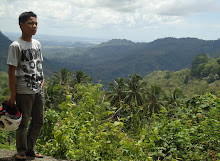Soil formations are formed by different layers in the soil]] that can specifically distinguish geology, chemistry, and biology, including the process of formation. When the age of the soil increases, the soil layer is generally easier to observe. Identification and description of the layers is the first step in classifying soils in the higher levels, using a variety of systems such as the USDA soil taxonomy or Australian Soil Clasification. The world body World Reference Base for Soil Resources provides a list of 40 characteristics of the soil: Albic, Andic, Anthraquic, Anthropedogenic, Argic, Calcic, Cambic, Chernic, Cryic, Duric, Ferralic, Ferric, Folic, Fragic, Fluvic, Gypsic, Histic, Hydragric , Hortic, Irragric, Melanic, Mollic, Natric, Nitic, Ochric, Petrocalcic, Petroduric, Petrogypsic, Petroplinthic, Plaggic, Plinthic, Salic, Spodic, Sulfuric, Takyric, Terric, Umbric, Vertic, Vitric, Yermic. New sediment from the land such as alluvium, sand, and volcanic ash may not have the history of the formation of a layer and a layer of sediment that is only distinguishable from the soil covered.Most types of soil refers to the main patterns of soil that is sometimes referred to as an ideal soil. Each layer is marked with the letter, with the order as follows: OABCR.O LayersLetter O shows the word "organic". This layer is also called humus. This layer is dominated by the presence of large amounts of organic material from various levels of decomposition. O layer is not the same as being a layer of leaves on the ground, which is not actually part of the land itself.Layer AA layer is the top layer of the soil, so given the letter A. A technical condition of the layers may vary, but are often described as a relative soil deeper layers of O. This layer has a darker color than the underlying layer and contains a lot of organic material. And maybe this layer is lighter and contains less clay. A layer known as a layer that has a lot of biological activity. Soil organisms such as earthworms, arthropods, nematodes, fungi, and many species of bacteria and archaea bacteria concentrated here, and often associated with plant roots.Layer BLayer B generally referred to under the soil, and contain similar mineral layer with a layer of clay minerals such as iron or aluminum, or organic material to the layer by a process leak. Plant roots penetrate the soil layer, but a layer of organic material is very poor. This layer is generally brown, or red from clay and iron oxide layers are flushed from A.Layer CLayer C is called for under A and B. layer is little affected by the presence of soil formation processes from the bottom. Layer C may contain rocks that have undergone a process of weathering. C layer also contains the parent material.Layer RR is defined as the layer coating experience some weathering rocks into soil. In contrast to the upper layer, this layer is very dense and hard and can not be dug by hand.
/ Soil types that exist in the territory of the Republic of Indonesia.1. Soil HumusSoil humus is a very fertile soil formed from lapukan leaves and tree trunks in dense tropical rainforest.2. Land of SandSandy soil is a soil that is not good for agriculture formed from igneous and sedimentary rocks with coarse grains and gravel.3. Alluvial Soil / Sediment SoilAlluvial soil is formed from river silt that settles in low-lying fertile soil properties and land suitable for agriculture.4. Land PodzolitPodzolit soil is fertile land generally located in the mountains with high rainfall and low temperature / cold.5. Volcanic Soil / Land of VolcanosVolcanic soil is soil formed from volcanic material lapukan lush containing high nutrients. Volcanic soil types can be found around the slopes of the volcano.6. Laterite soilLateritic soil is not fertile land that was fertile and rich in nutrients, but the nutrients are lost due to late rains brought by the high water. Example: West Kalimantan and Lampung.7. Mediterranean Land / Land KapurMediteran soil is not fertile soil properties formed from weathering of the limestone rock. Example: Nusa Tenggara, Moluccas, Central Java and East Java.8. Peat Soil / Land OrganosolOrganosol soil is less fertile soil to grow crops that are the result of weathering formed marsh plants. Example: swamps of Kalimantan, Papua and Sumatra.
a. The top layer, a layer formed from the weathering of rock and the remains of living things
the dead. Layer is the most fertile soil.b. The middle layer, is made up of a mix between the weathering of rocks and water. These layers are formed
because most of the material carried by the upper layer of water and sediment. This layer is commonly called clay.c. The bottom layer, a layer consisting of boulders. In between blocks
are the result of weathering of rocks. So, there is a stone that has not been completely decaying.d. Layer of the host rock, a rock solid. If you want to know the composition of the layer tanahdi
environment around you, do the following activities.



0 komentar:
Posting Komentar